Key takeaways:
- Flossing significantly improves oral health by preventing cavities and gum disease, fostering a sense of responsibility and empowerment in personal wellness.
- Daily flossing is essential for reaching areas toothbrushes can’t, establishing a routine that guards against future dental issues.
- Different types of dental floss (waxed, unwaxed, dental tape, orthodontic floss) cater to individual needs, enhancing cleaning effectiveness.
- Effective flossing techniques, such as the “C” shape method and timing flossing before brushing, can enhance overall dental care experience.
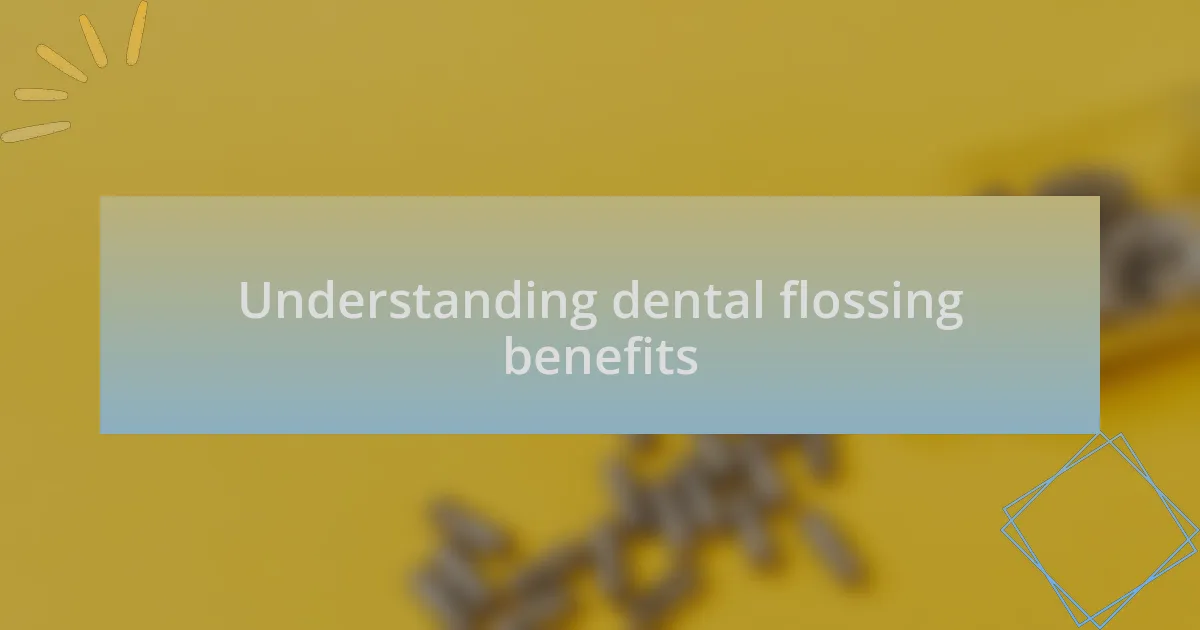
Understanding dental flossing benefits
Flossing may seem like a mundane task, but its benefits extend far beyond just preventing cavities. Personally, I’ve noticed that regular flossing turned my dental visits from potential nightmares into routine check-ups, which is such a relief. Isn’t it amazing how a simple string can drastically reduce your chances of gum disease and keep your smile brighter?
One of the most profound moments for me was seeing my gum health improve dramatically after I integrated flossing into my daily routine. It was eye-opening to realize that I had been ignoring the spaces between my teeth where plaque loves to hide. Seeing my dentist’s approval during each visit reinforced the emotional satisfaction that comes from knowing I’m taking responsibility for my oral hygiene.
In a way, flossing feels like a moment of self-care that benefits both my mouth and my wellbeing. Have you ever felt that rush of confidence after a good floss? It’s like giving yourself a little gift that lasts all day – a clear conscience and a happier smile! The cumulative effect of consistently flossing is not just about dental health; it’s also about feeling empowered in your own skin.
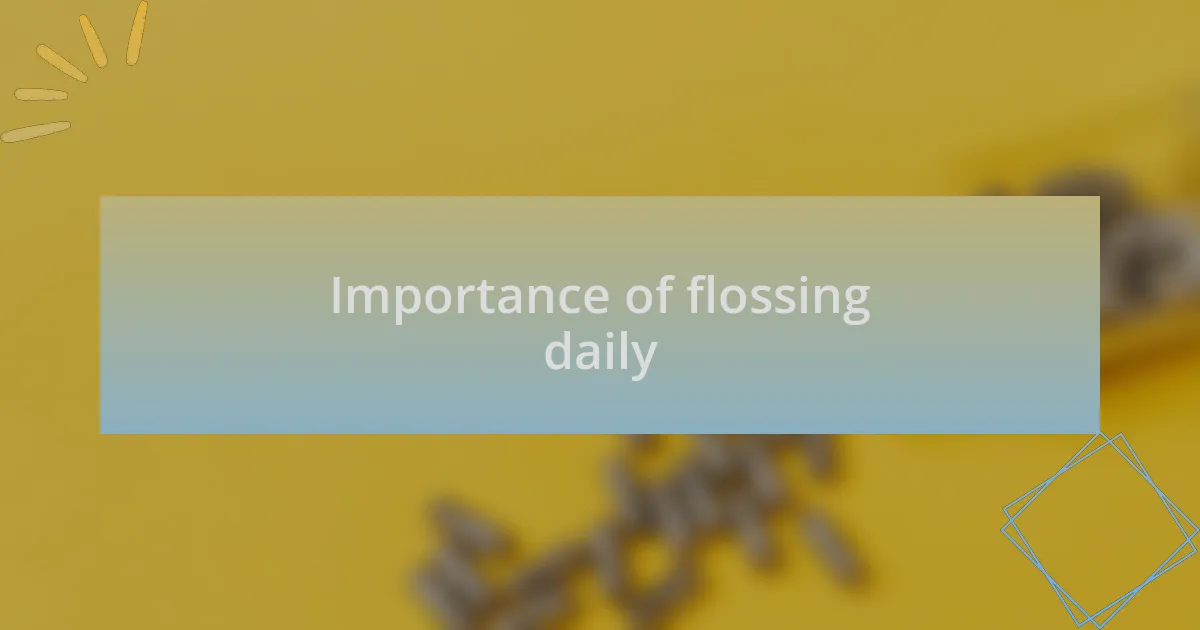
Importance of flossing daily
Flossing daily is crucial for maintaining optimal oral health. I’ve often thought about the areas toothbrushes can’t quite reach — those nooks and crannies between my teeth. It’s fascinating to realize that plaque hides there, ready to cause trouble if left unattended. Each time I floss, I feel like I’m reclaiming my smile, knowing I’m preventing potential cavities before they start.
I remember one instance when I skipped flossing for a few days and found myself facing an uncomfortable dental issue. That experience taught me a valuable lesson about the importance of consistency. It’s not just about the immediate cleaning; it’s about establishing a routine that guards against future problems. Have you ever wondered what could be lurking between your teeth? I have, and that’s what drives me to keep my flossing game strong.
The emotional aspect can’t be overlooked either. I feel a sense of pride when I leave the bathroom after flossing, knowing I’ve taken a proactive step in caring for my mouth. Each time I use that little piece of string, I feel more in tune with my overall health journey. Isn’t it empowering to make choices that directly contribute to our well-being? Flossing truly fosters a deeper connection to my dental health, which is something I cherish.
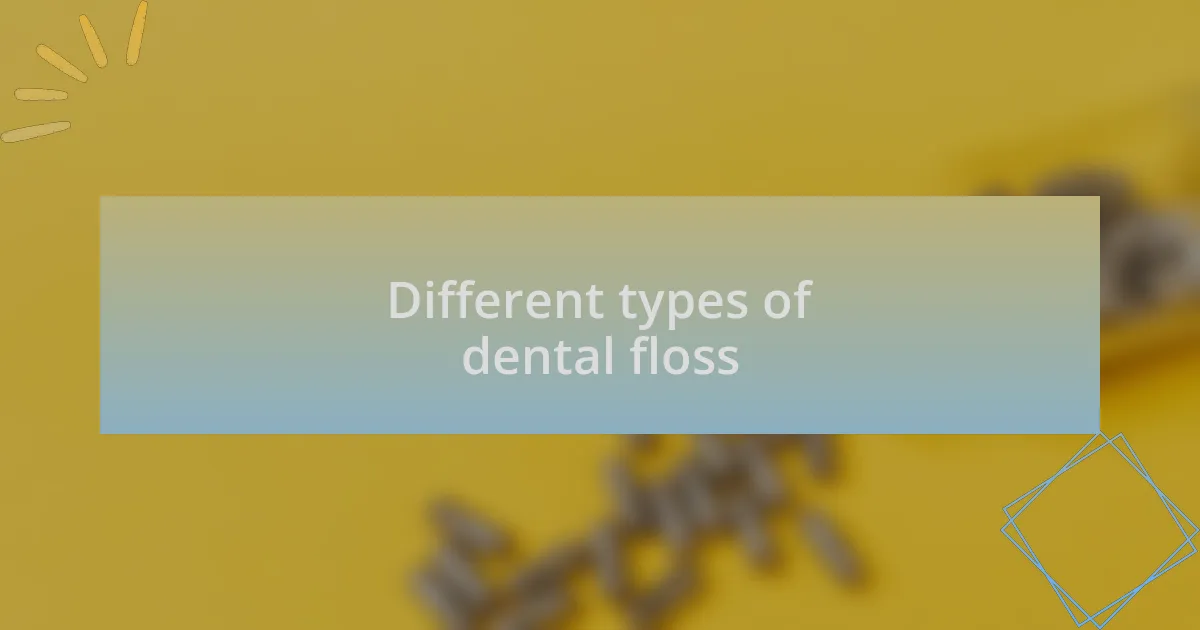
Different types of dental floss
When it comes to dental floss, there are several types to consider, each one serving different needs. Waxed and unwaxed floss are probably the most common. Personally, I find that waxed floss glides between my teeth more smoothly, making it easier to tackle those tight spaces. Have you tried both? You might be surprised at how much of a difference the wax finish can make.
Another option I’ve explored is dental tape, which is broader than traditional floss. I remember my dentist suggesting it during a visit, and I was intrigued. When I switched, I quickly noticed that it covers more surface area, giving me a greater sense of cleanliness. It felt like giving my teeth a more thorough scrub, and I appreciated the extra reassurance.
For those with braces or other dental work, floss threaders or special orthodontic floss can be lifesavers. I recall a friend who struggled with traditional floss after getting braces; the challenge of keeping everything clean had her worried. Once she discovered these tools, her routine became much more manageable, proving that the right tools can make all the difference in our dental hygiene journey. What tools have you found that work best for you?
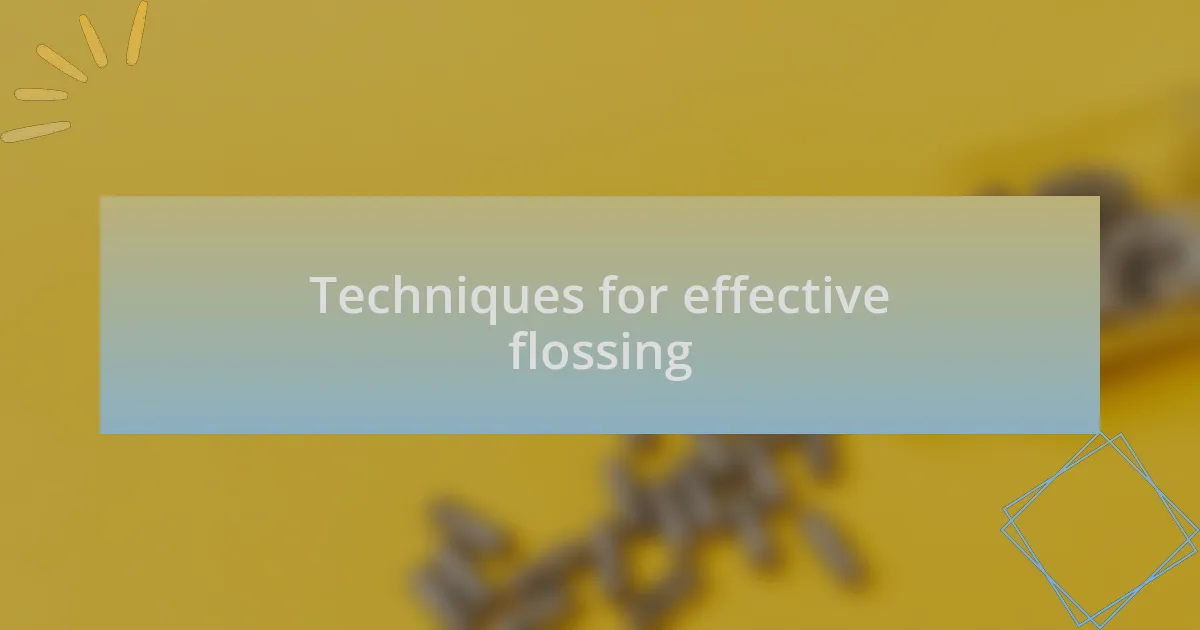
Techniques for effective flossing
Flossing can sometimes feel like a chore, but I’ve found that using the right technique can transform the experience. One approach that works wonders for me is to wrap the floss around my middle fingers, using my index fingers to guide the floss. This gives me better control and allows me to maneuver into those tricky areas between my teeth easily. Have you ever tried this method? It’s like giving yourself a little more dexterity!
Another technique I swear by is the “C” shape method. When I wrap the floss around each tooth and gently press it against the tooth surface, I can feel the difference. The sensation when I slide the floss up and down isn’t just satisfying—it’s an effective way to remove plaque. I genuinely believe there’s a feeling of success in knowing I’m tackling those hard-to-reach spots. Have you experienced that little victory when the floss comes out clean?
Timing plays a crucial role, too. I discovered that flossing before brushing enhances the cleaning effect. It’s fascinating how doing it in this order allows the fluoride from the toothpaste to reach between the teeth more effectively. I remember the first time I shifted my routine; I noticed a significant decrease in food particles trapped between my teeth. Isn’t it interesting how small adjustments can lead to such impactful results?
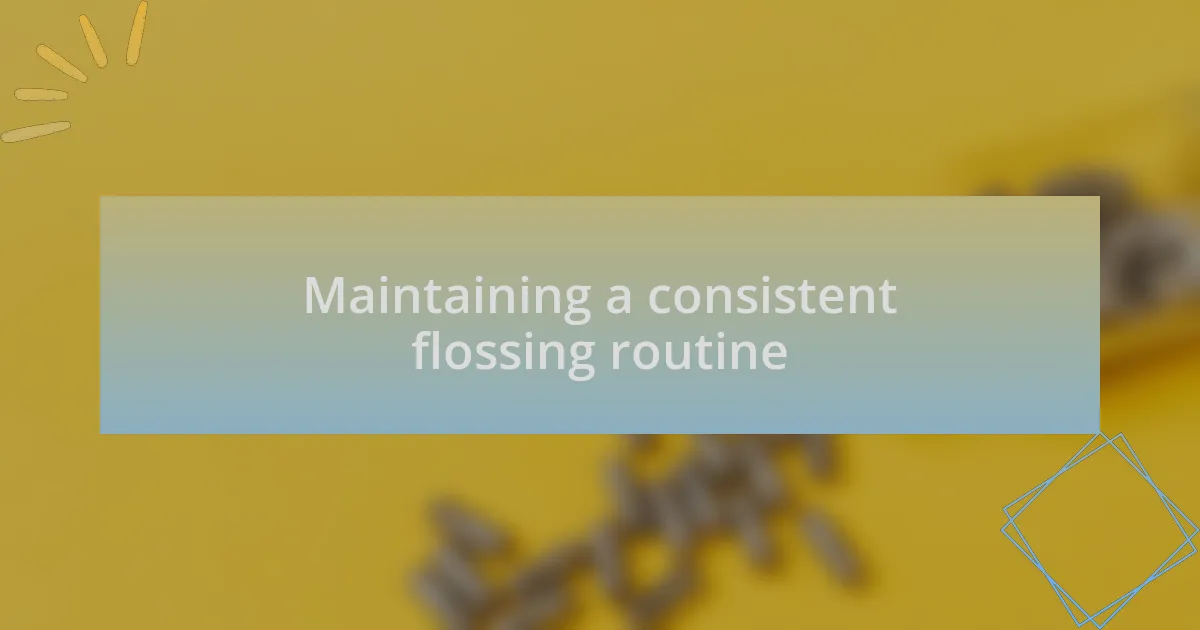
Maintaining a consistent flossing routine
To maintain a consistent flossing routine, I’ve found that setting a specific time each day makes all the difference. For me, flossing right after breakfast feels like a natural part of my morning ritual. I often ask myself: what better way to start the day than ensuring my mouth is clean and fresh?
I also keep my floss in a visible spot to remind me to use it. Placing it next to my toothbrush has created a visual cue that encourages me to floss daily. There’s something about that little nudge that turns it into an effortless habit. Have you tried placing your floss in a spot where you can’t miss it?
Another key factor for me is the habit stacking technique. I’ve started pairing my flossing with another daily activity, like listening to my favorite podcast. This not only makes it more enjoyable but helps me stay consistent. It’s amazing how finding a small joy in the process can keep you committed to your dental health. Have you discovered ways to make flossing more enjoyable?